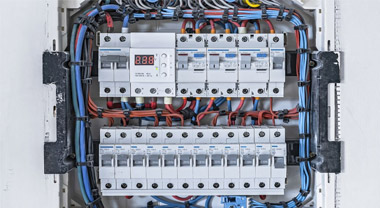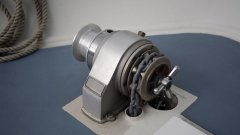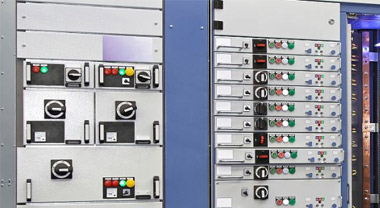how to identify circuit breaker type?
In this extensive guide, we delve into how you can accurately identify different types of circuit breakers. We'll discuss the distinct characteristics of each type and provide insights into why understanding circuit breakers is crucial for electrical safety. Let's explore this enlightening journey together!
Table of Contents
- Why Identify Circuit Breaker Types?
- Understanding the Basics: What is a Circuit Breaker?
- Recognizing Common Types of Circuit Breakers
- Detailed Insights: Main Types of Circuit Breakers
- Factors to Consider when Identifying Circuit Breaker Types
- Additional Tips for Identifying Circuit Breakers
- Summary
1. Why Identify Circuit Breaker Types?
Knowing how to identify the type of circuit breaker installed in your electrical panel is essential for both homeowners and professionals. Understanding the type of circuit breaker helps to maintain a safe and efficient electrical system, troubleshoot problems, plan for electrical upgrades, and comply with electrical codes. Having knowledge of the breaker type also helps in the event of an electrical emergency.
2. Understanding the Basics: What is a Circuit Breaker?
A circuit breaker is an essential device in your home's electrical system. It automatically interrupts the flow of electricity when a fault is detected, like an overload or a short circuit. This interruption helps protect your home and appliances from potential electrical damage. Circuit breakers are typically housed in the electrical panel (also known as the breaker box).
3. Recognizing Common Types of Circuit Breakers
There are many different types of circuit breakers, but the three most common types found in residential homes include:
- Standard Single-Pole Breakers: These are the most common types of circuit breakers. They protect one energized wire and supply 120V to a circuit. They're typically rated for 15-20 amps.
- Double-Pole Breakers: These breakers protect two energized wires and supply between 120V/240V to a circuit. They're commonly used for large appliances such as dryers and water heaters.
- GFCI (Ground Fault Circuit Interrupter) and AFCI (Arc Fault Circuit Interrupter) Breakers: These specialized breakers provide additional safety by preventing ground faults and arc faults, respectively. They are often used in areas such as kitchens, bathrooms, and outdoor circuits where the risk of electrical shocks is higher.
These breakers can often be identified by their physical characteristics and locations within the electrical panel. However, for a more detailed understanding, we need to dive deeper into each type.
4. Detailed Insights: Main Types of Circuit Breakers
Let's explore the different types of circuit breakers in more detail:
4.1 Single-Pole Breakers
Single-pole breakers have a single switch and typically come with a 15-amp or 20-amp rating. You can identify these breakers by their size, as they're usually half the width of double-pole breakers. These breakers are used to protect individual circuits supplying smaller appliances like lights and small appliances.
4.2 Double-Pole Breakers
Double-pole breakers, as the name suggests, have two switches that are tied together. These breakers are typically rated from 15-amps up to 50-amps or even higher, providing 240 volts to larger appliances like air conditioners, electric dryers, and electric range ovens. Their size is usually double that of single-pole breakers, which can help in their identification.
4.3 GFCI Breakers
GFCI breakers help prevent ground faults by instantly switching off the power when they sense a leakage in the electrical current. They have a "TEST" button on the breaker and are often used for circuits that may come into contact with water, like bathrooms, kitchens, and outdoor circuits. You can identify these breakers by this "TEST" button on the front of the breaker.
4.4 AFCI Breakers
AFCI breakers prevent arc faults, which are caused by damaged, overheated, or stressed electrical wiring or devices. Like GFCI breakers, AFCI breakers also have a "TEST" button, helping in their identification. They are often used in bedrooms or living areas where arc faults are likely to occur.
5. Factors to Consider when Identifying Circuit Breaker Types
Now that we've discussed the various types of circuit breakers, let's explore some factors that can assist you in identifying them:
- Shape and Size: The shape and size of the circuit breaker can often indicate its type. For instance, single-pole breakers are typically half the width of double-pole breakers.
- Number of Switches: Single-pole breakers have one switch, while double-pole breakers have two switches tied together.
- Presence of a "TEST" Button: GFCI and AFCI breakers have a "TEST" button, which is absent on standard single-pole and double-pole breakers.
- Breaker Amperage: The amperage rating of the breaker, often printed on the switch, can provide a clue to its type. For instance, a 30-amp, 240-volt breaker is likely a double-pole breaker.
- Location in the Panel: The location of the breaker in the panel can sometimes indicate its type. For instance, GFCI breakers are often used for circuits located near water sources.
6. Additional Tips for Identifying Circuit Breakers
If you're still uncertain about the type of a circuit breaker after considering the above factors, here are some additional tips:
- Check the Panel Directory: Many electrical panels have a directory that lists the breaker numbers and the rooms or appliances they correspond to. This directory can sometimes include information about the breaker type.
- Refer to the Manufacturer's Information: The manufacturer's name or logo, along with other information like the model number, is often printed on the breaker. This information can be used to look up the breaker type online or in the manufacturer's product catalog.
- Consult a Professional Electrician: If you're unable to identify a breaker's type or if you're uncomfortable working with your electrical panel, it's always best to consult a professional electrician.
7.Summary
To wrap up, understanding your circuit breaker types plays a significant role in maintaining electrical safety in your home or workplace. By learning how to identify the different types of circuit breakers, including single-pole, double-pole, GFCI, and AFCI breakers, you're better equipped to manage electrical issues and make informed decisions when considering electrical upgrades.
Remember, identification often comes down to key details such as the shape and size, the presence of a 'TEST' button, the amperage rating, and the breaker's location in the electrical panel. When in doubt, always consult a professional electrician.
By grasping the essence of circuit breaker types and their roles, we can strive towards safer, more efficient electrical systems, contributing to better and safer homes and workplaces. Keep in mind that electrical work is serious business. When unsure, always seek the advice of a certified electrician to avoid potential hazards.
Thank you for joining us on this informative journey to demystify the identification of circuit breaker types! Stay tuned for more enlightening discussions on electrical safety and efficiency.




